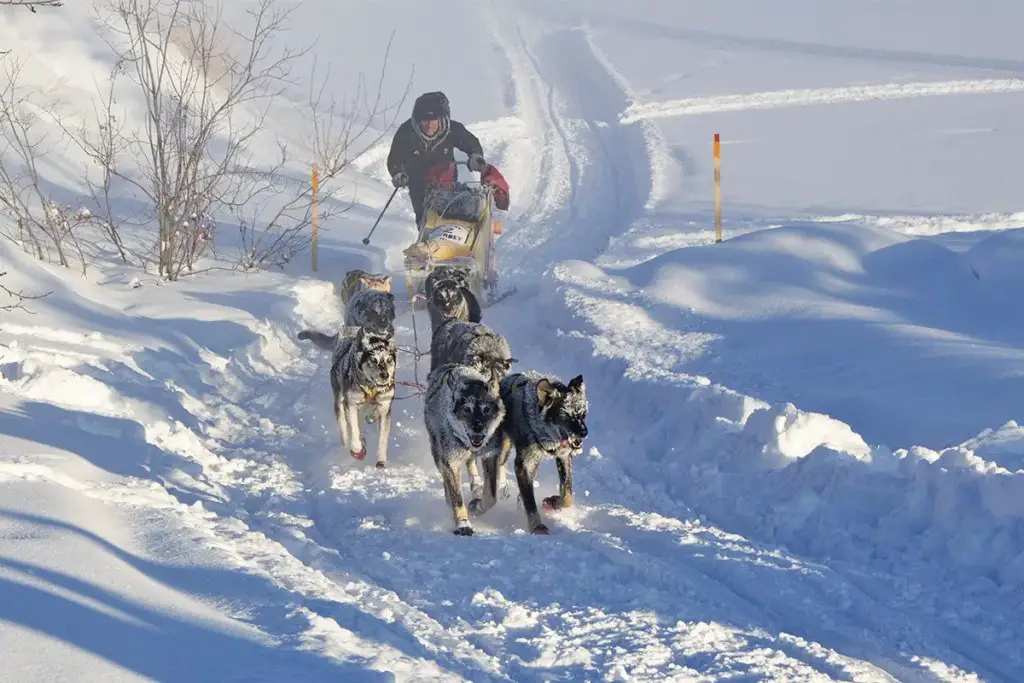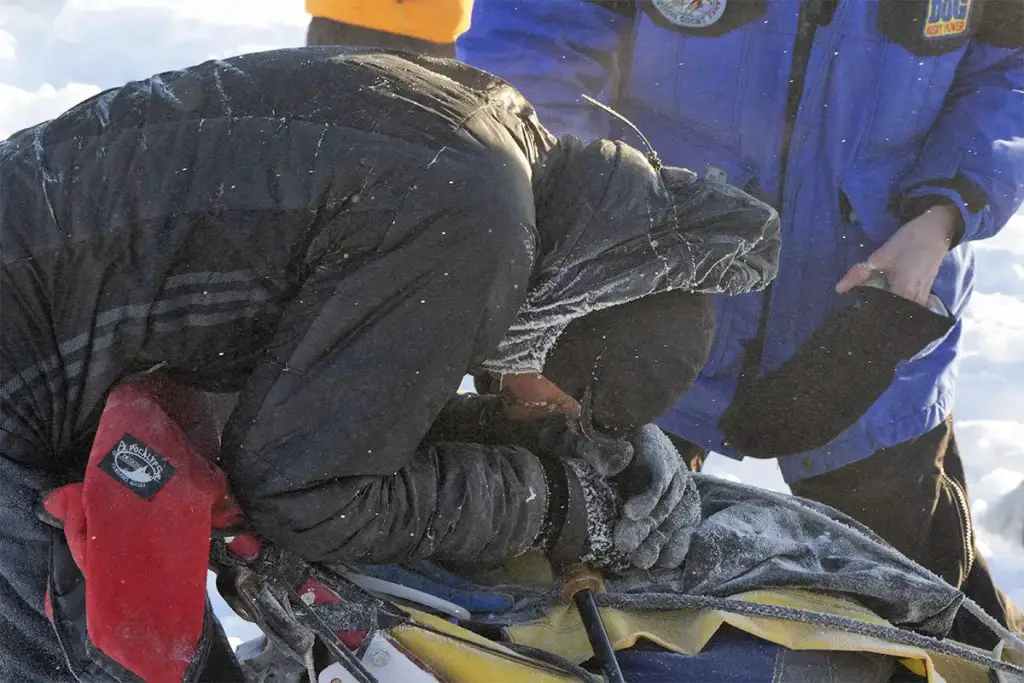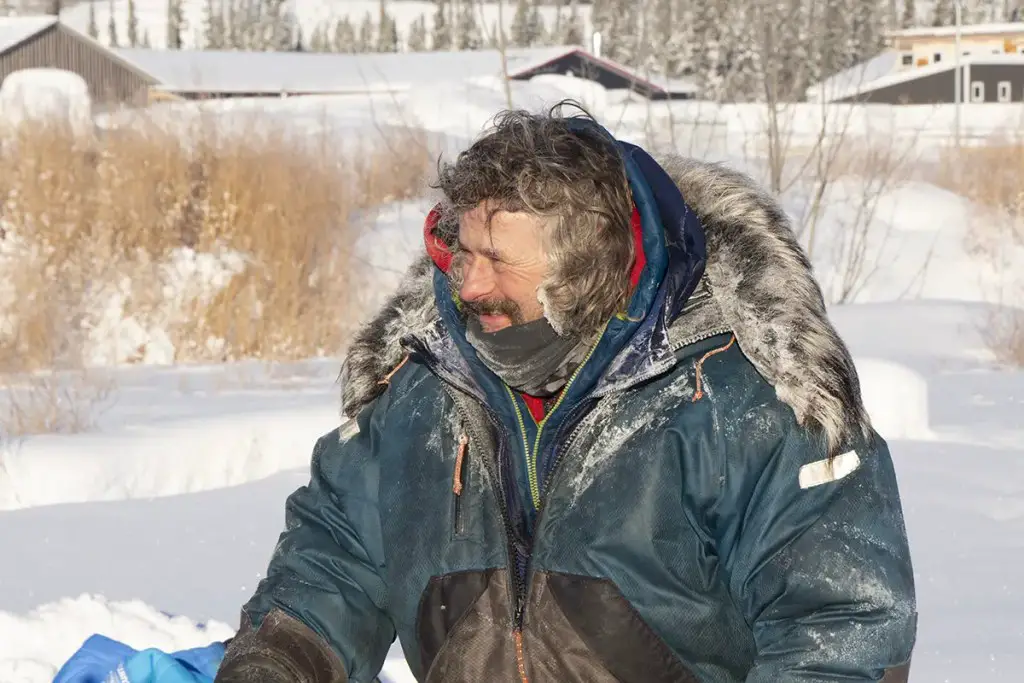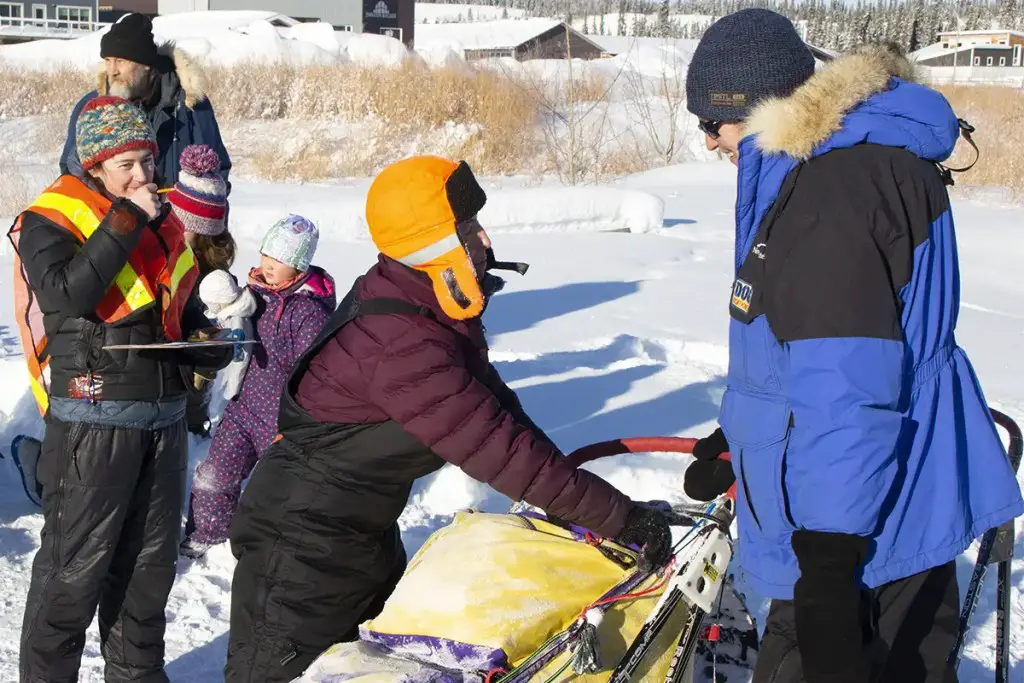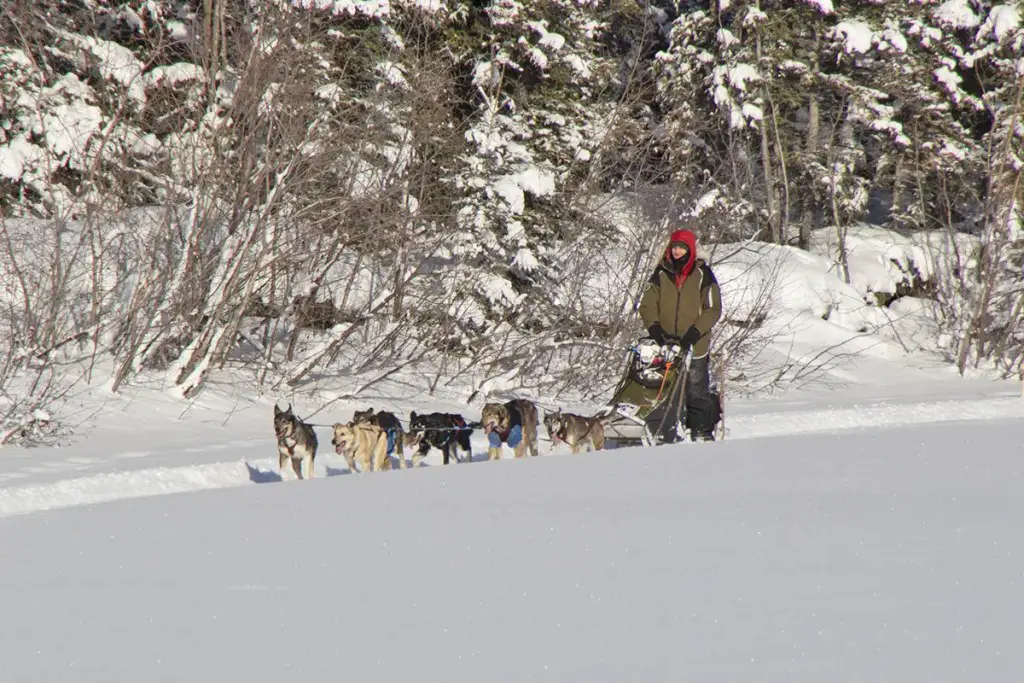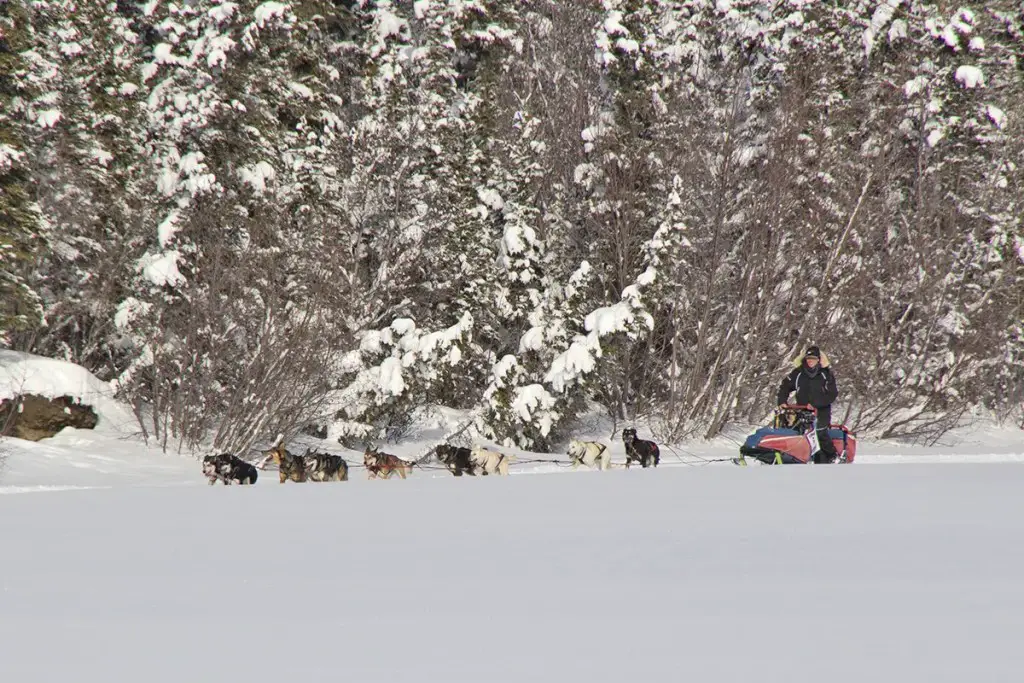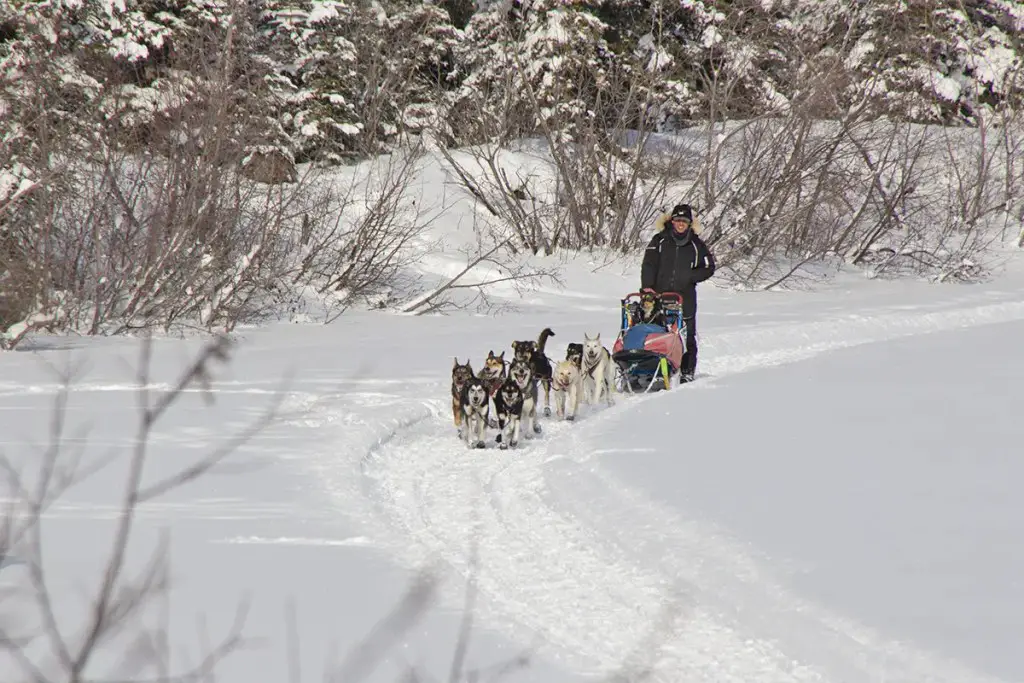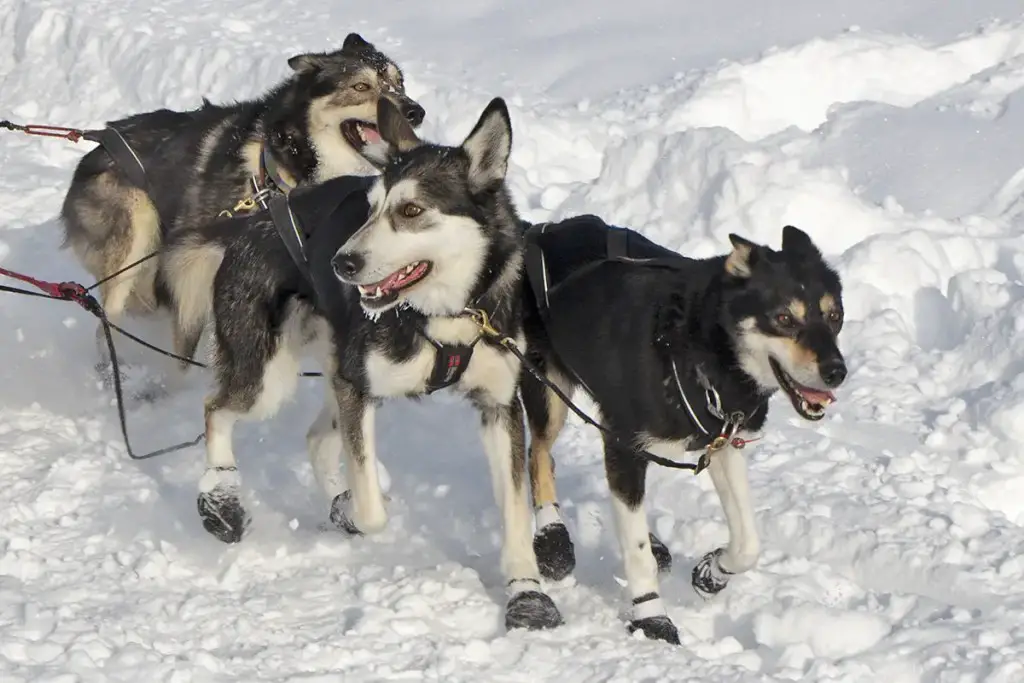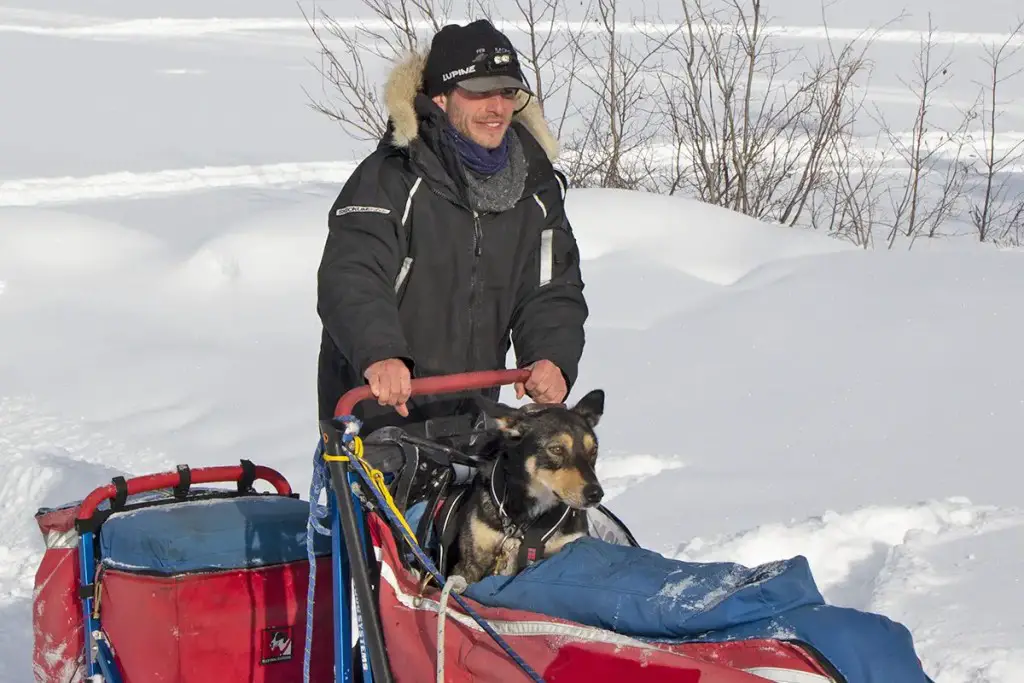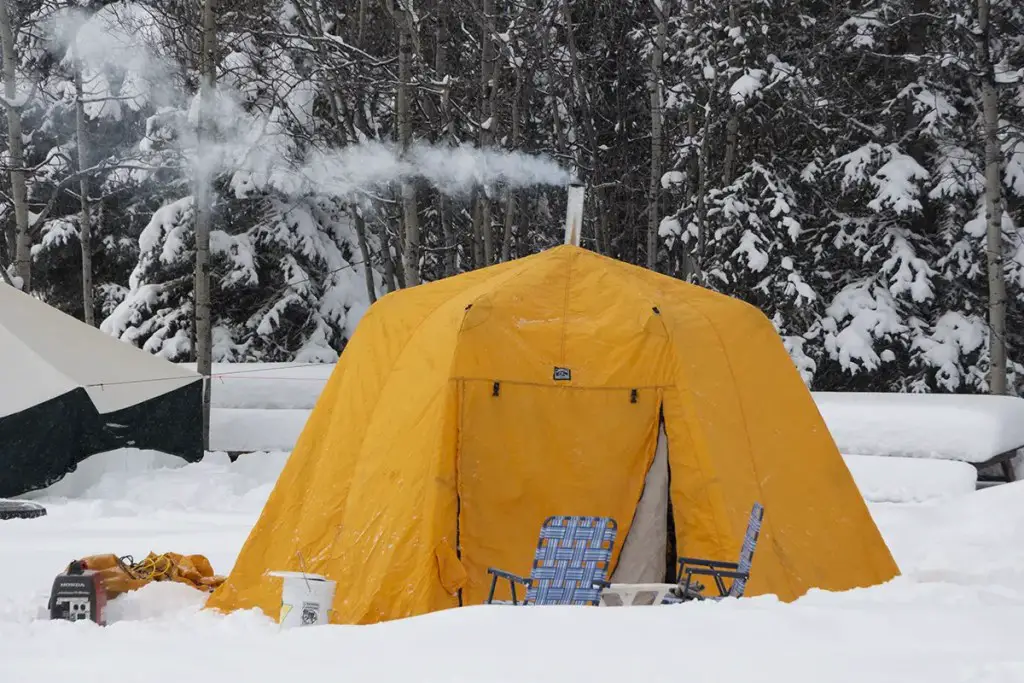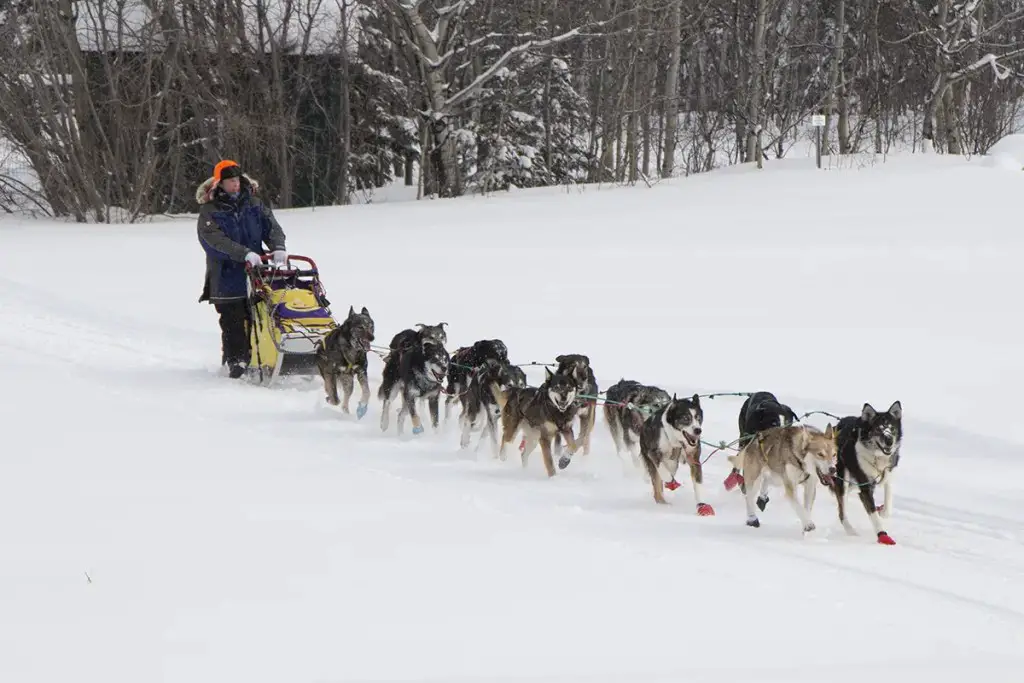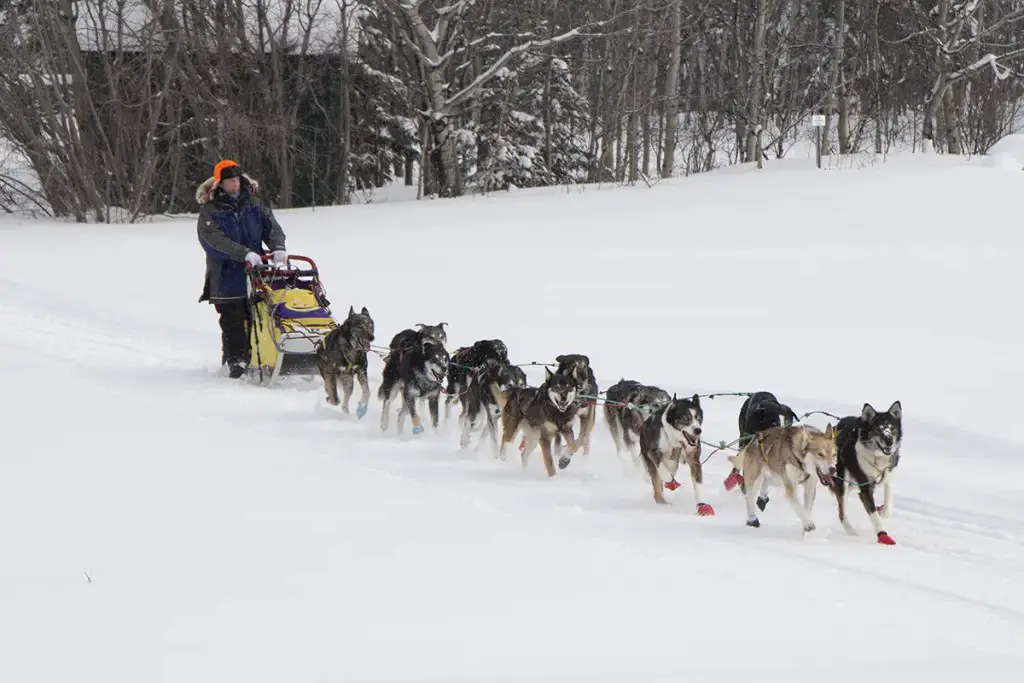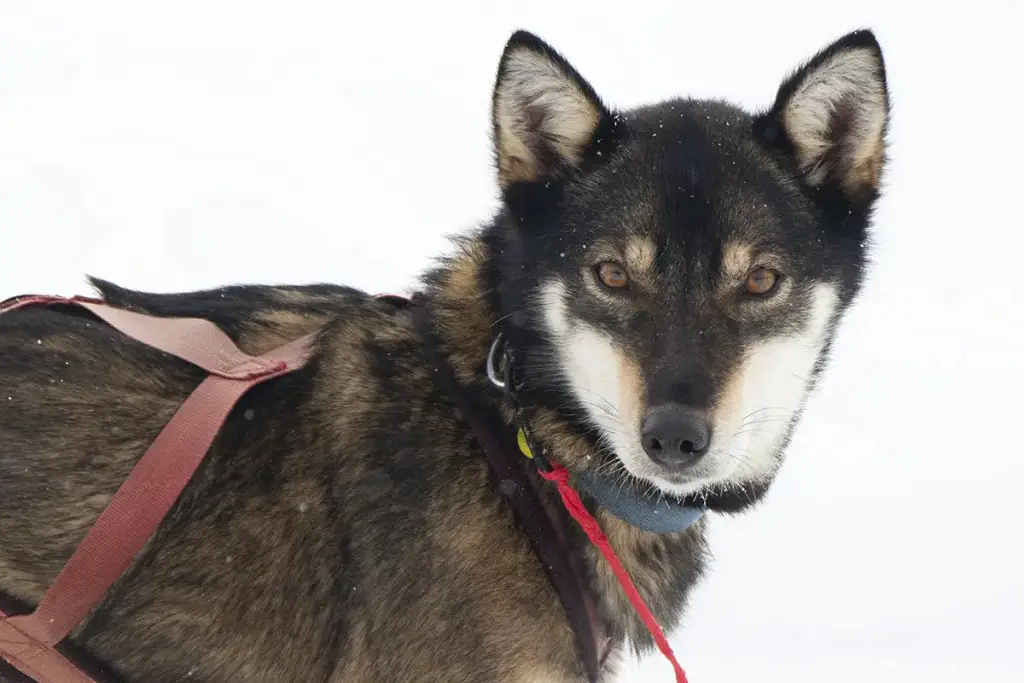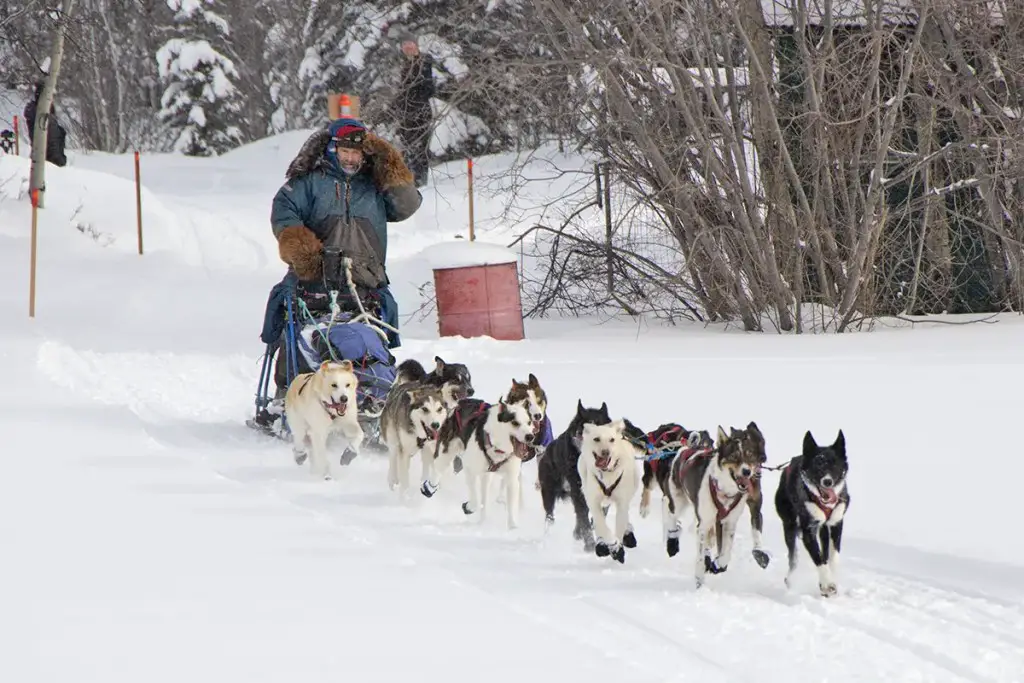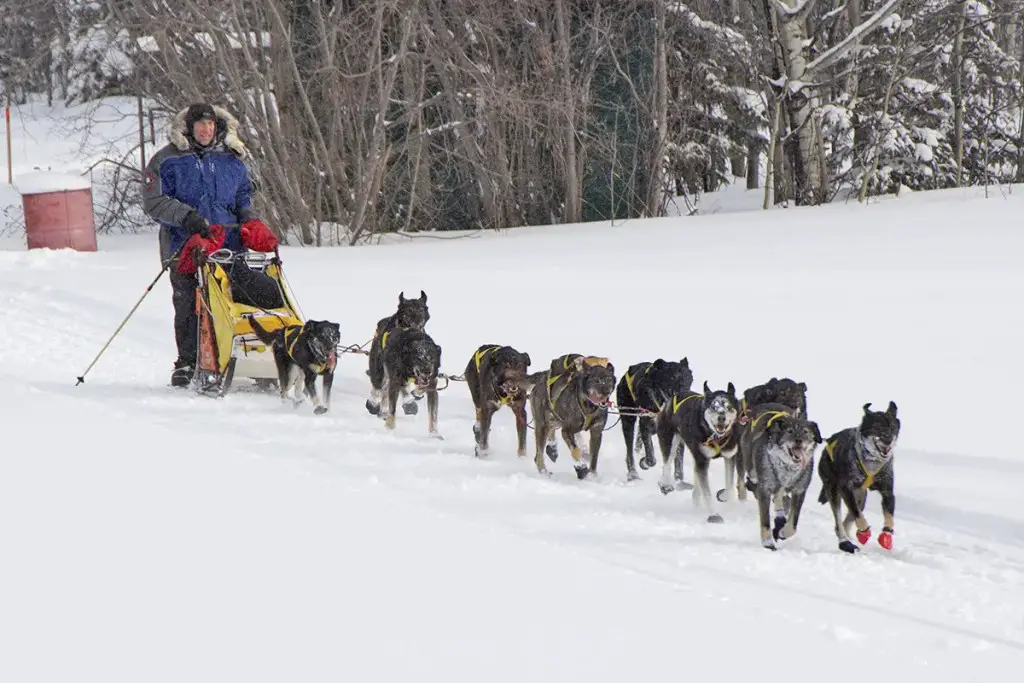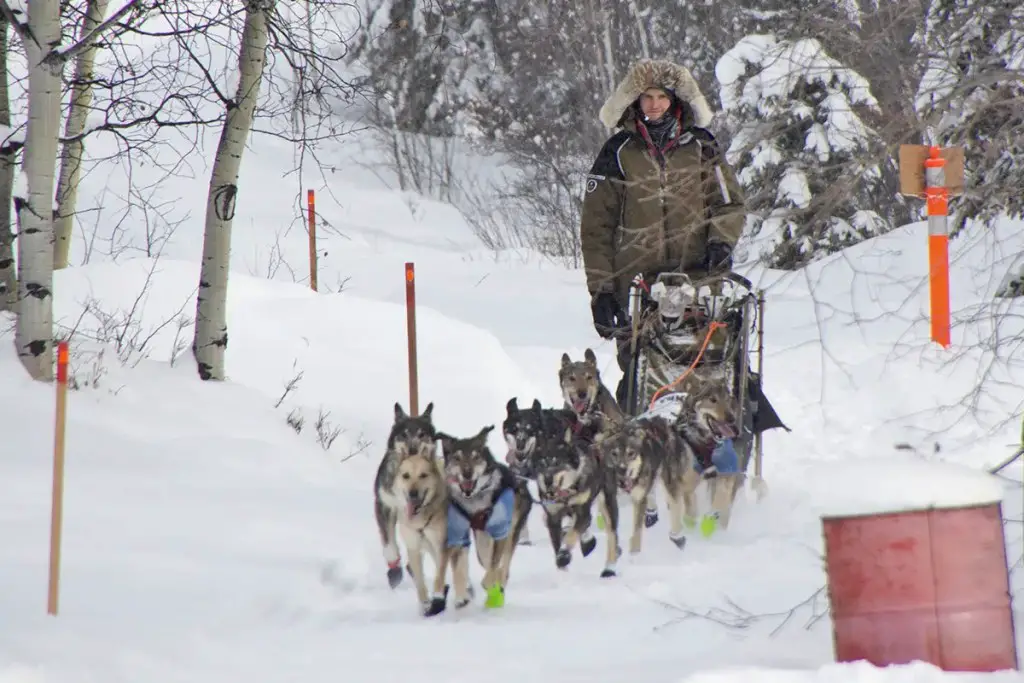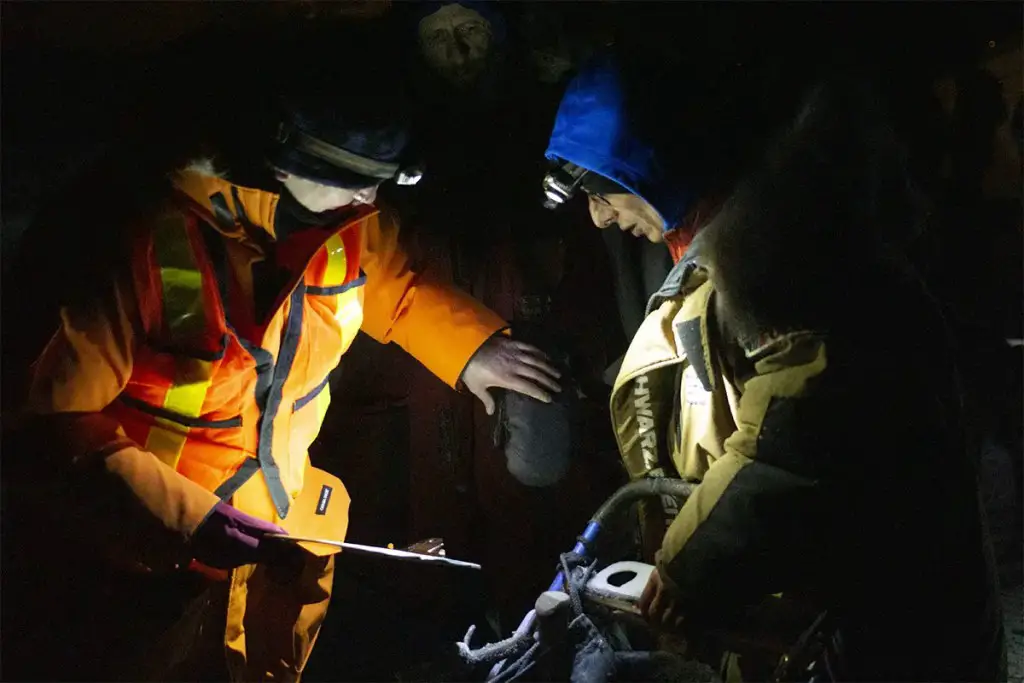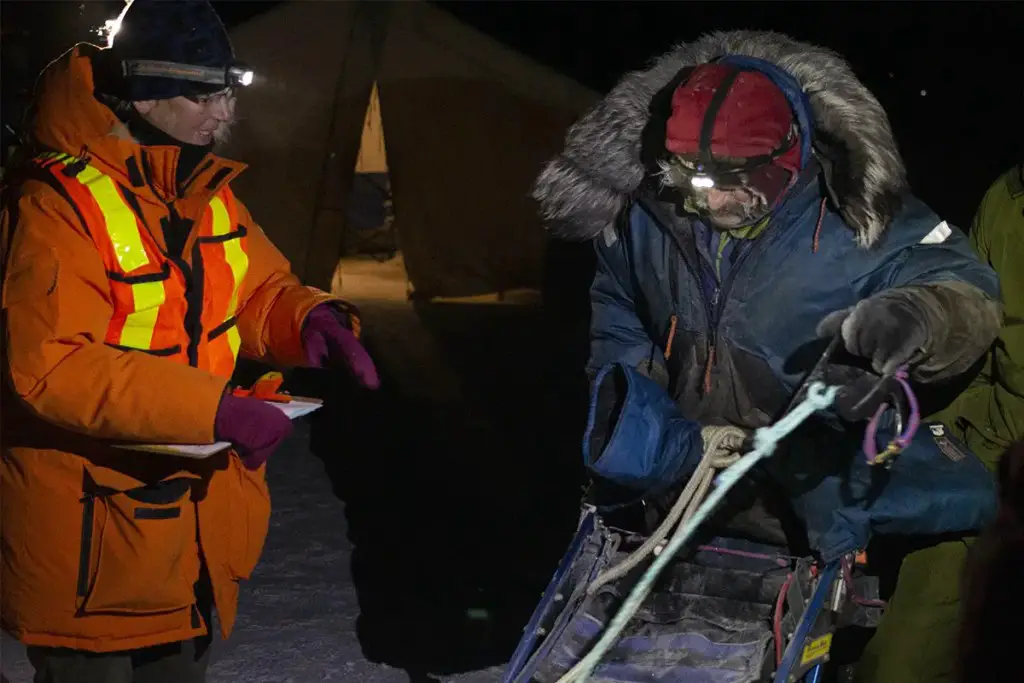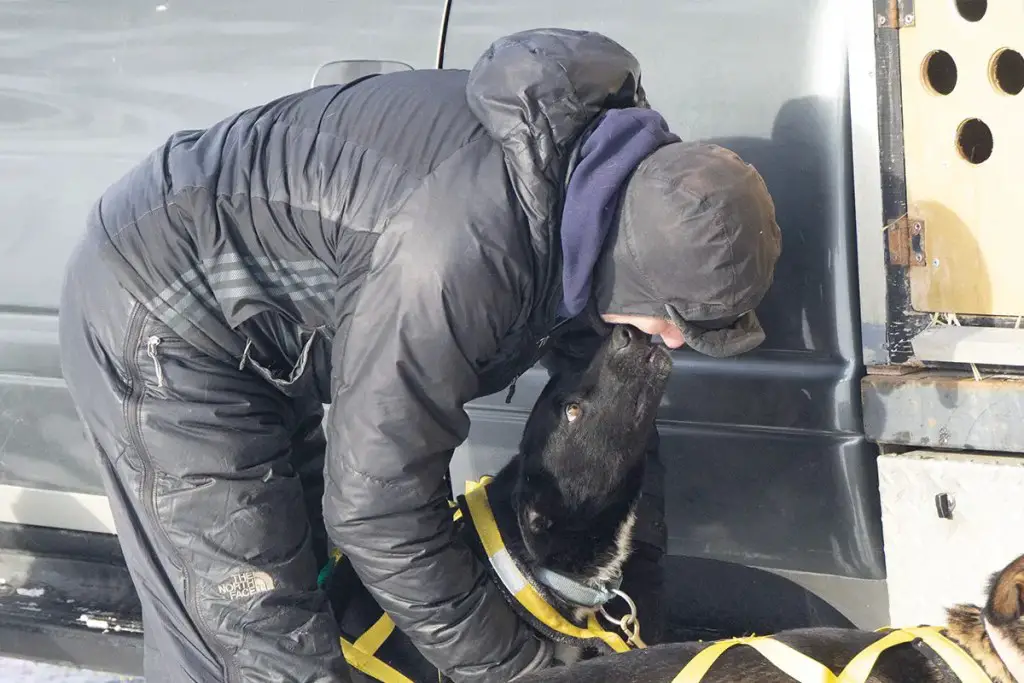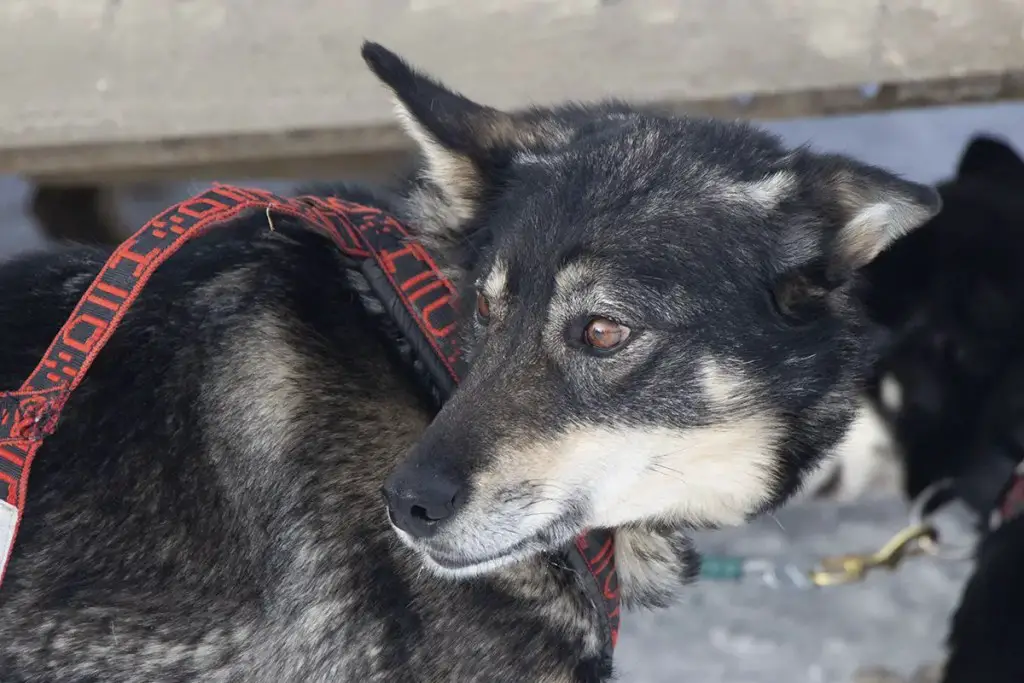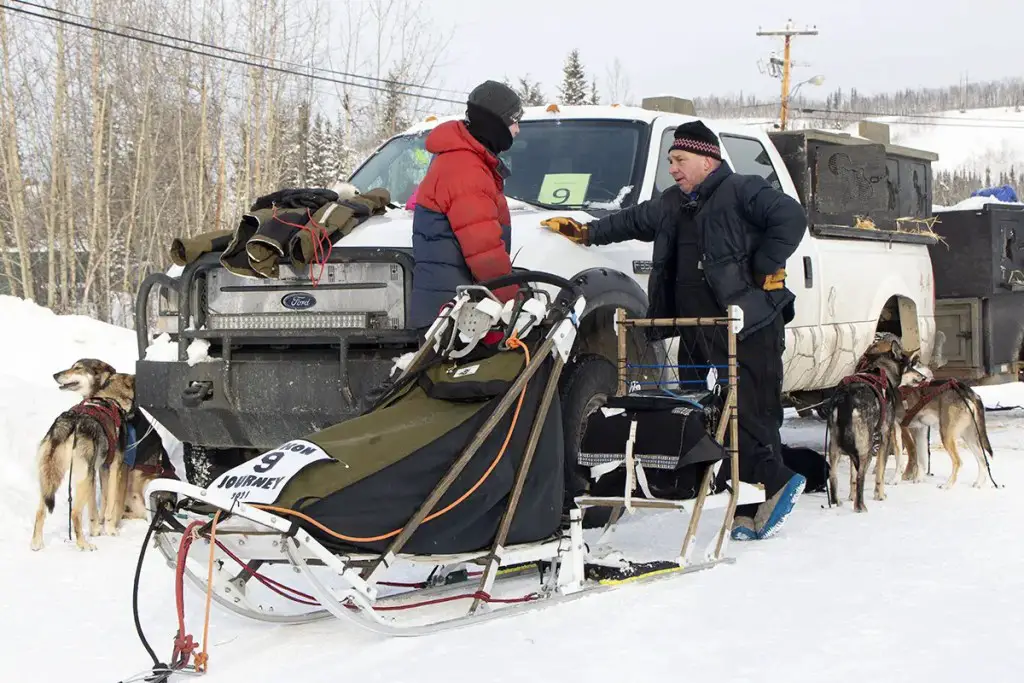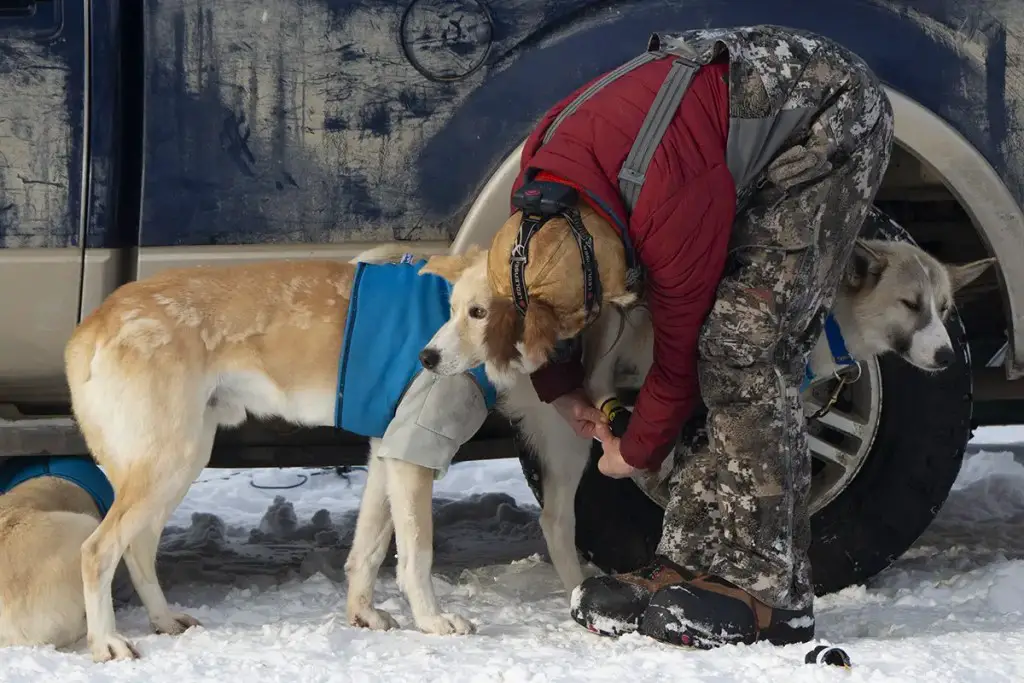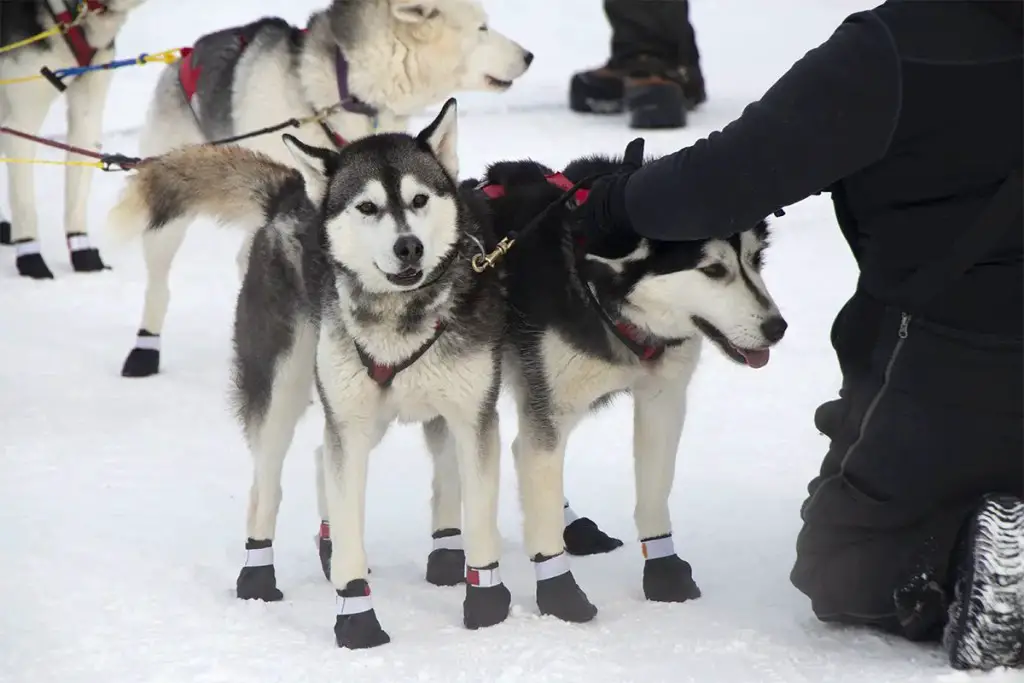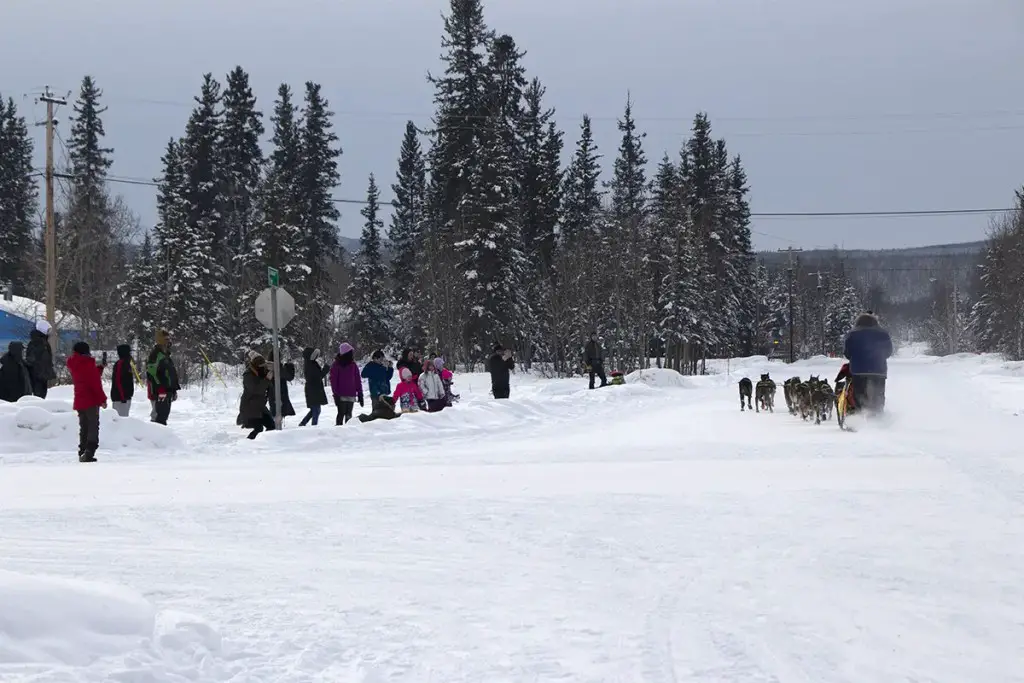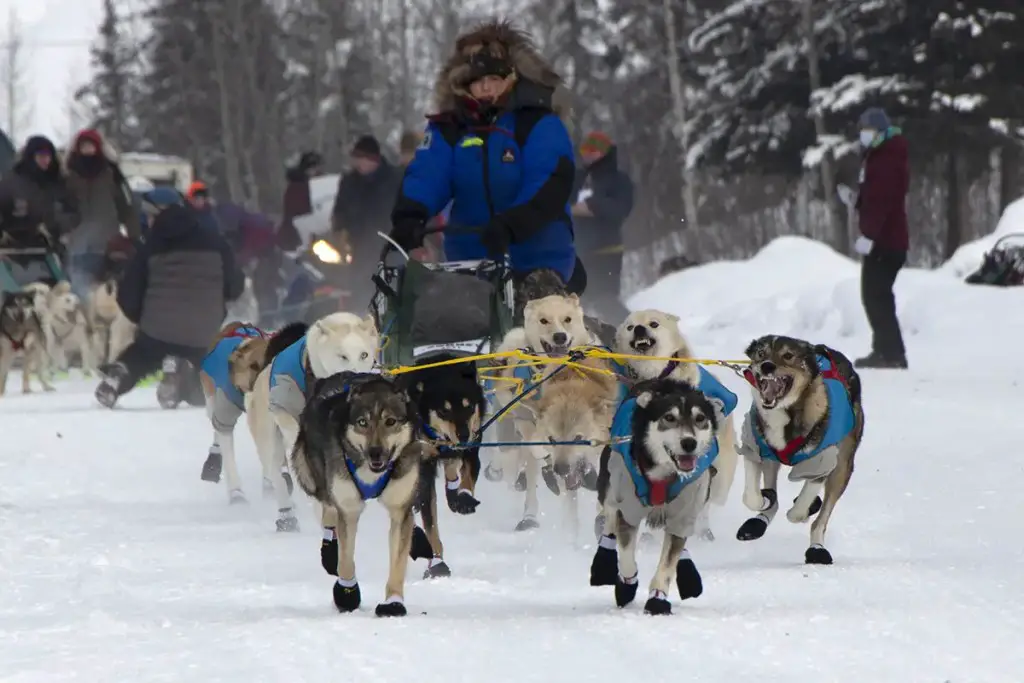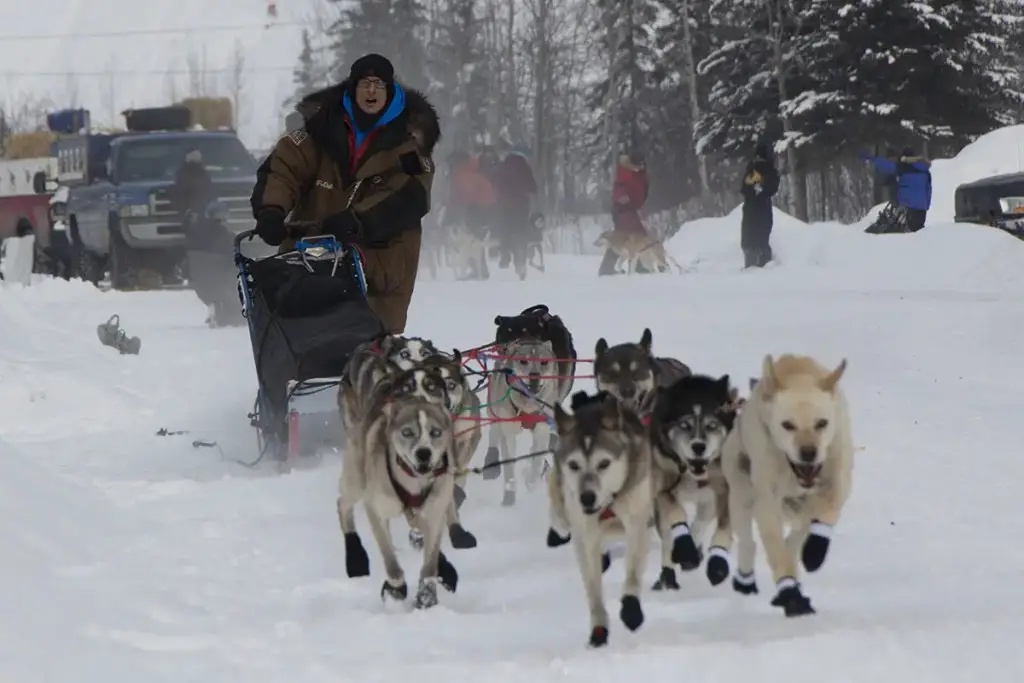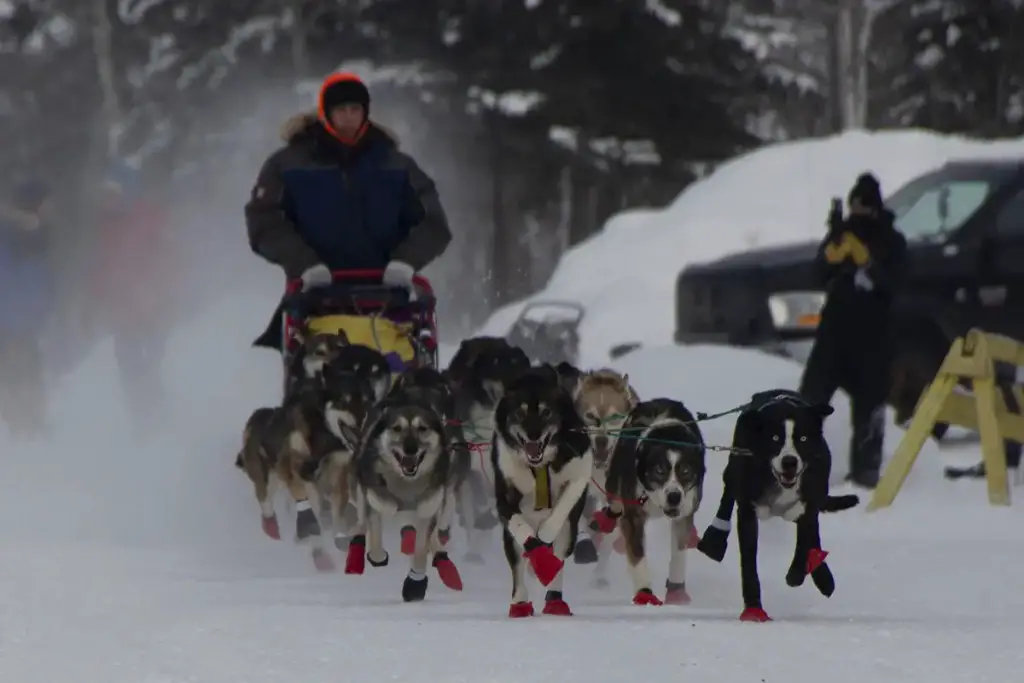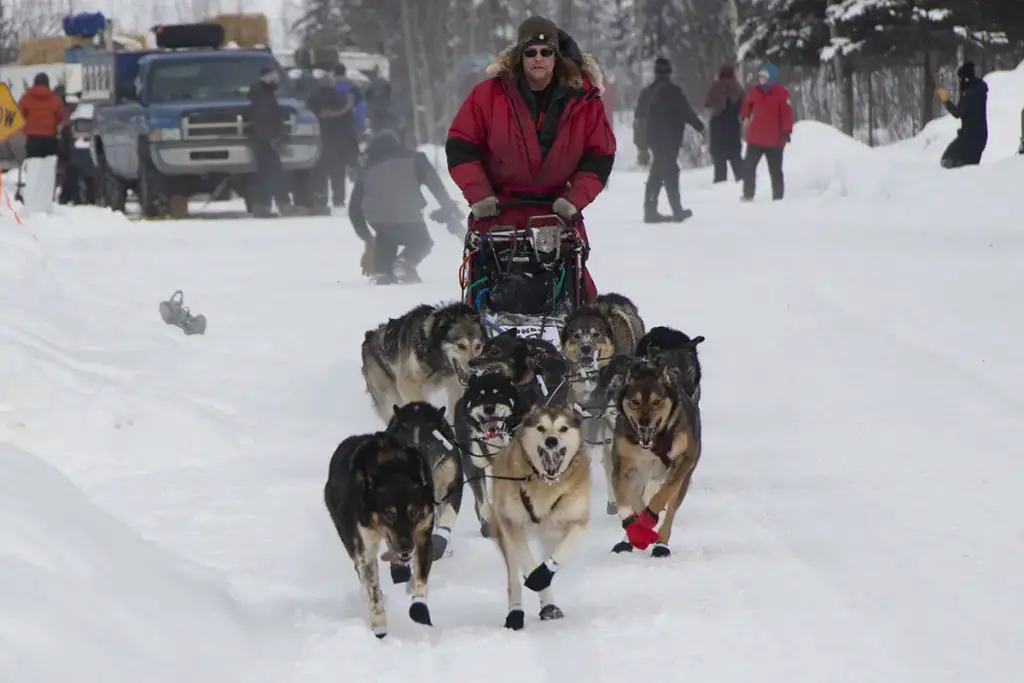Looking back on the 2021 Yukon Journey: the race that could

It took less than 48 hours from start to finish, but the 2021 Yukon Journey came to an end on Feb. 26 after Hans Gatt and his team of dogs reached the finish line in Whitehorse to win.
Having left the final time station with a 13 minute lead on Ed Hopkins in second place, trail conditions and runner material selection nearly were the story of the race.
Gatt had left Braeburn with a couple of runner options, but not with the black plastic polymer that would have been the ideal choice for what musher Jason Biasetti described as Styrofoam-like snow on the final stretch.
“Well, I thought I had it made – I had a 13 mintue lead or whatever at time station 3 – and I figured that we were pretty even the whole race, Ed and me, so I figured that 13 mintues would be enough,” Gatt said after the race. “But when we hit the Takhini River, my sled just stopped and the gangline just died. I couldn’t even (put) slack into it. … Totally my mistake. I forgot black plastic in Braeburn, so I had this yellow plastic on which is for warm weather. It doesn’t slide at all on the river, and I could see Ed coming up behind me. The rest is history. I tried to stay ahead of him.”
Luckily for Gatt, he wasn’t the only one without the ideal runners.
“Well I knew if he had the right plastic on there was nothing I could do – he just moves two or three miles per hour faster – but he said he had the same problem,” Gatt said.
Plastic choices aside, the finish was close. Gatt’s official finish time was 10:34 a.m. and Hopkins’ time was three minutes behind at 10:37 a.m.
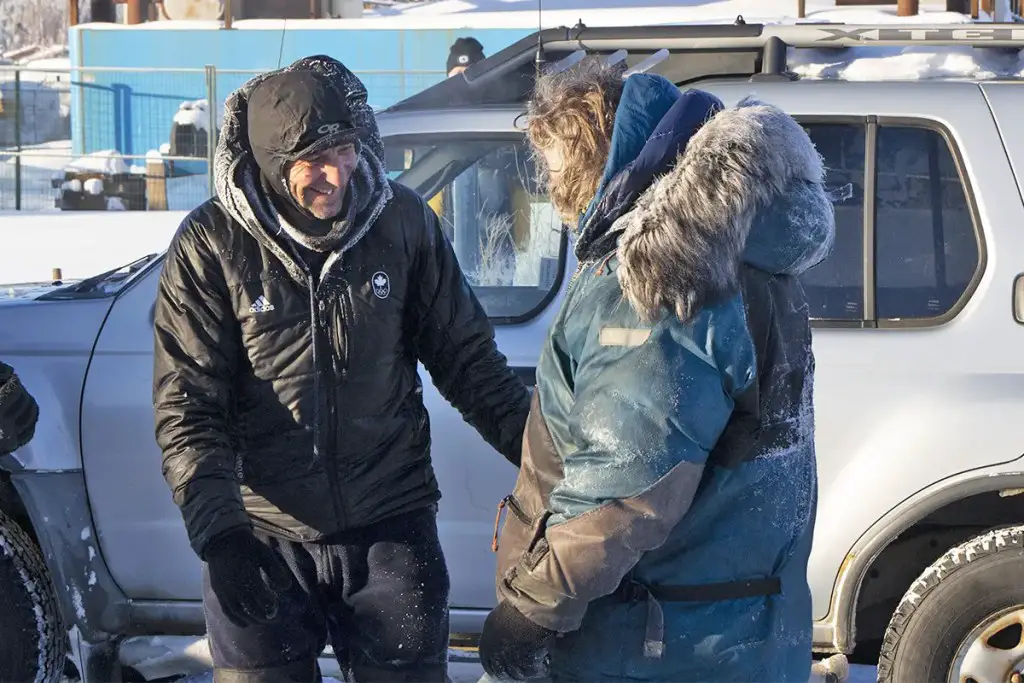
Hopkins was upbeat at the finish, laughing about how close he came to catching Gatt.
“(I was) coming down the Takhini River and it almost felt like my dogs were kind of chasing something, like picking something up,” Hopkins said. “You can’t see – there are so many bends in the river you couldn’t see – but I kind of had a feeling there must be something close.”
“So I come around the river, get to the Takhini River Bridge and their ears just picked right up and they just started going a little bit quicker. I came around the corner and there was Hans just going around the corner. I think we saw each other at the same time. Our eyes probably met in the middle and then the game was on,” he said.
Asked if he expected the 13 minute gap to make for a close finish with less than 40 miles to go, Hopkins didn’t mince words.
“I did. (Gatt) maybe didn’t think so, but I was going to put everything into it.”
Unlike Gatt and some of the other mushers, Hopkins was pleased to see the overnight snowfall that seemed to aid in creating conditions that slowed every team down to a degree on the last leg, as he was close enough to Gatt for his team to somewhat benefit from their trail breaking.
“Oh yeah, it doesn’t bother me,” Hopkins laughed. “Last night coming from Braeburn into that last (time station), I don’t know how long I broke trail for, but there was about six inches of snow out there. … It was a six hour run and I probably broke trail for five of them.”
Rounding out the top three was Dawson’s Jason Biasetti, who finished at approximately 11:15 a.m. (Official times have not been released by organizers as of the afternoon of Feb. 28.)
The trail was as good as it could be, Biasetti said, but he too had the wrong plastic.
“You needed the black,” Biasetti said agreeing when told Gatt’s earlier comments. “Exactly what I was thinking. I grabbed pink instead of black.”
Biasetti was led into the finish by Spiderman and Hulk, two brothers who split the lead duties with their father Sal, who finished in swing.
“Sal, he was in lead with either Spidey or Hulk for most of the race, but I decided at time station 3 I’d put in Hulk and Spidey,” Biasetti said.
Rest of the field
Martine Le Levier was the fourth musher across the finish line, arriving minutes before noon, and with her trademark smile and gregarious personality.
“I said before today, ‘Get it done,’ and it’s done,” she said. “(The dogs) were still happy when they came in. … Everybody is healthy and everybody is doing good. It was a little bit hot today, but that’s OK.”
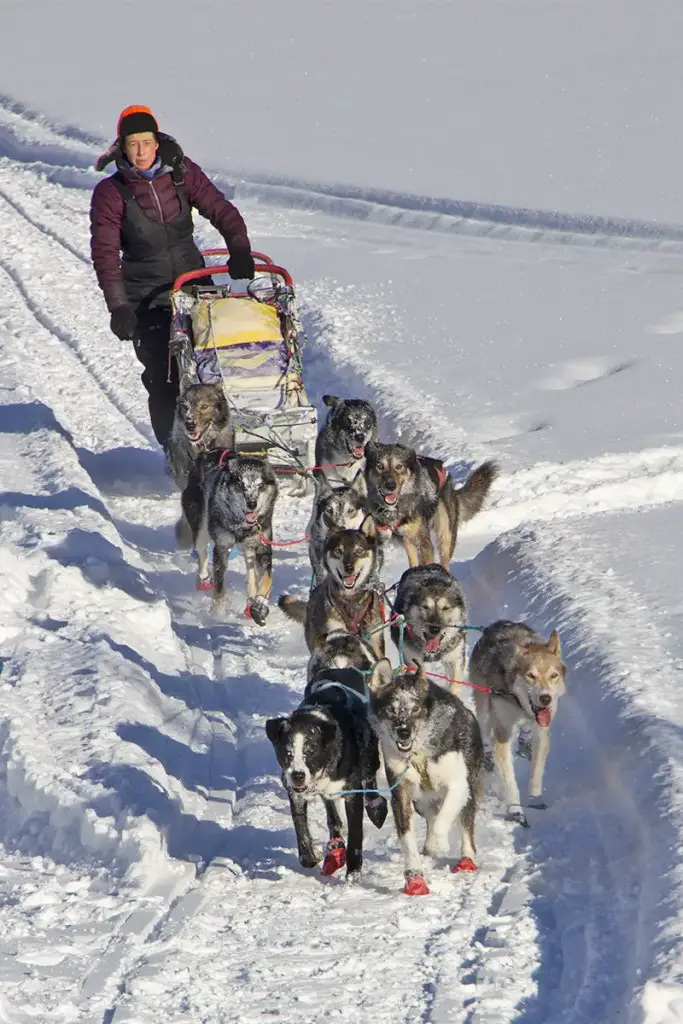
Nathaniel Hamlyn finished fifth, down to just seven dogs on the line.
Back in Braeburn, he’d lamented his decision to start with 11 rather than 12 – something he was no doubt thinking about for a portion of the 50 miles with a dog in his sled basket.
“I bagged a dog for 50 miles, pulled it with seven, so that was a lot,” Hamlyn said when asked about what stood out from the last two runs. “I never stopped kicking the whole way from Braeburn. Yup, it was hard.”
He said he only kicks with his left foot, because if he kicks with his right, he loses his balance. Unsurprisingly asked if that made him feel a bit lopsided, his answer was a simple, “Yes.”
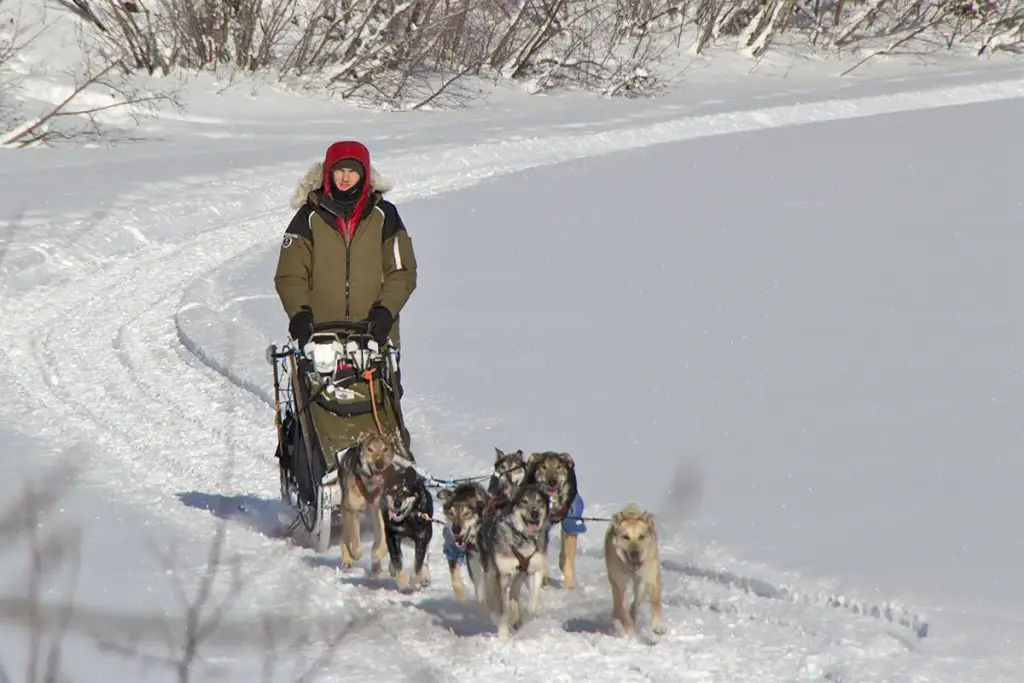
Next to finish was Connor McMahon in sixth place.
Like the earlier finishers, he and his dogs had to adjust to trail conditions. The overflow, he said, wasn’t something his team was too keen on.
“The dogs were a little bit surpised about that,” he said.
McMahon did, however, have one of the experiences that every musher seems to relish in, running at night alone with his team under a nearly full moon.
“I kept thinking somebody was behind me with a headlamp or something like that,” McMahon said about his overnight run into the final time station. “I got to run without a headlamp for quite a ways – that’s always nice.”
He said he was able to enjoy the moment.
“Just turn off the lights and watch the shadow of the dog team from the moonlight,” he said. “It’s hard to describe, man. It’s hard to describe how cool that can be, but it is cool.”
This was McMahon’s longest race to date, by roughly 30 miles, and he said all of his dogs were impressive.
“Pretty well every single one of these dogs stood out to me,” McMahon said. “They showed me each spectacular hidden gem they’ve got.”
He also said this race was tougher than anything he’s done to date.
“This, compared to any of the other races I’ve done, has been a lot harder and a lot more humbling. For sure that was a pretty tough race,” he said.
Kyla Boivin finished seventh, Susie Rogan finished eighth, and Paul Hamlyn finished ninth to win the Red Lantern.
Marcelle Fressineau and Jacob Heigers both scratched in Braeburn.
Race results
| Place | Name |
| 1 | Hans Gatt |
| 2 | Ed Hopkins |
| 3 | Jason Biasetti |
| 4 | Martine Le Levier |
| 5 | Nathaniel Hamlyn |
| 6 | Connor McMahon |
| 7 | Kyla Boivin |
| 8 | Susie Rogan |
| 9 | Paul Hamlyn |
| SCR | Marcelle Fressineau |
| SCR | Jacob Heigers |
Trail conditions
As Yukon Sports Report reported earlier this week, the race got off to a rather inauspicious start with two teams making a wrong turn at the first intersection and a number of others attempting the same.
After that start though, the teams were all off at a very fast pace. Gatt, who’s no stranger to the stretch of trail between Pelly Crossing and McCabe Creek, said it was the fastest he’d ever seen the trail.
“I’ve never gone from Pelly to McCabe that fast in all those years because usually we come there with a tired Yukon Quest team,” Gatt said. “This time, we ran with a fresh team so two and a half hours from Pelly to McCabe.”
Conditions stayed fast all the way into Carmacks, with the first musher – Connor McMahon – pulling in much earlier in the evening than media and volunteers had expected pre-race.
After Carmacks, things changed though as the quick trail of day one was replaced with the blown-in trail along Mandanna Lake and the Chains Lakes for most of the way into Braeburn.
Martine Le Levier was the first musher to leave the Mandanna Lake time station and she led the way into Braeburn with her teaming breaking trail most of the way.
“The wind blew in the trail,” Le Levier said. “It’s always nice to have someone in front, so if you can chase it’s easier with your dogs.”
Le Levier added that the stretches of trail in the trees were still in fantastic shape.
From Braeburn into the final time station, mushers said the trail was in good shape, but overnight precipitation meant areas of six to eight inches of fresh snow.
The final stretch from the time station to the finish was one that caught out a lot of mushers as blown-in snow created a Styrofoam-like texture that increased friction and slowed teams.
“I know in Dawson when the river gets windblown or something like that, it kind of creates this Styrofoam texture to it,” Biasetti explained. “You don’t know (what runners to choose) because you don’t know what (the trail) looks like (while in the checkpoint). I can easily tell when the snow looks like… your plastic isn’t going to glide on it properly. … And the dogs are working so hard – you know they’re working hard – but you’re not moving quickly.”
It’s something Biasetti said affected all the teams near the front for certain.
“Hans would know – his dogs boogie,” Biasetti said. “My dogs like to boogie, Ed’s dogs like to boogie, and they’re trying to boogie but they can’t – it was just too much friction.”
Format reactions
The format – featuring 20 hours of mandatory rest spaced over two checkpoints and three time stations – was something of a group effort, originally formulated at a planning meeting of mushers and organizers.
While mushers did have suggestions for improvements, the general consensus was it achieved the goal of putting dog rest – and overall care – at the very centre of the race.
Gatt said the idea had originally been floated to the Yukon Quest board, but it didn’t want to try it for a Yukon race this winter.
“So we said, ‘Well, let’s put it on ourselves,'” Gatt said. “It’s beautiful, you know. The dogs get a lot of rest, it’s a fast-paced race and a hell of a lot more fun than a 1,000-mile race I can tell you that.”
Hopkins pointed out that the rest formula added a new dimension to the race.
“Well, challenges come with different definitions right? Challenging as in tough or challenging as its a mathematical race,” Hopkins said. “You’ve got to know everything – where everybody is, who’s in play, who’s manipulating the table, who’s going for the bait, who isn’t.”
Le Levier said it might need some tweaks, but that it certainly brought teams closer together.
“I have to say it gave us a chance to be a bunch of mushers at the same time in the same place just talking with nobody (else) around. It was having fun with a bunch of people,” Le Levier said. “It was very friendly at the (checkpoints and time stations) I have to say. Everybody helping each other; it was very good.”
One possible issue raised about the format was the way it essentially forced mushers into running their teams from checkpoint to time station or time station to checkpoint, to rest. The distances between the timed resting areas were reasonable ones for all the teams, but anyone training for another race who had hoped to run specific distances or times before camping or resting was a bit out of luck.
The mandatory rest was also somewhat effective in keeping the race competitive and mushers close to each other, allowing for fewer checkpoints to be open at a given time and therefore requiring fewer overall volunteers – always a good thing when the world is going through a pandemic.
Most importantly though, however, it allowed the race to take place even after one of the veterinarians originally scheduled to help with the race was forced to withdraw. This allowed the vets on the race trail to keep up with the number of teams and make sure all the dogs were checked and given any necessary treatment at checkpoints.
Relatively mild weather coupled with the race’s more relaxed rules allowing handlers to setup camp at checkpoints meant that everyone was able to observe COVID-19 protocols as required and still stay safe and warm without filling up buildings or utilizing shared accomodations as is typical of many mid-distance and long-distance races. While mushers would have been able to do all that themselves if required, handing that duty off to handlers allowed mushers time to sneak in some food and rest for themselves while still keeping up with dog care.
